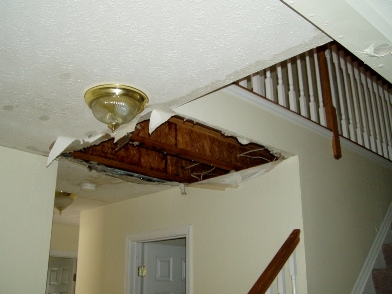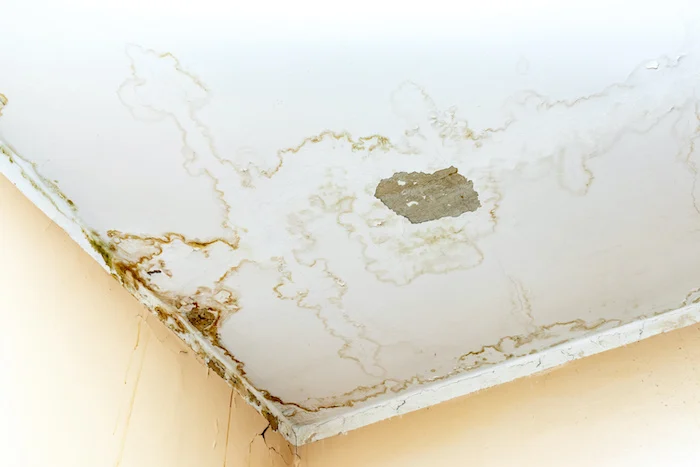Discovering that your bathroom is leaking into the ceiling can be both alarming and challenging to address. In this in-depth guide, we’ll explore the common reasons behind “Bathroom Leaking Into Ceiling” and provide comprehensive solutions to help you identify, rectify, and prevent this issue. Gain insights into the intricacies of bathroom leaks and safeguard your home from potential water damage.

Understanding the Predicament: Bathroom Leaking Into Ceiling
Before delving into solutions, let’s dissect the problem of a bathroom leaking into the ceiling. This occurrence often signifies water seepage from the bathroom, leading to potential structural damage, mold growth, and other issues.
Common Causes of Bathroom Leaks Into Ceiling
- Faulty Caulking and Grout: Deteriorated or poorly applied caulking and grout in the bathroom can allow water to penetrate walls and floors, eventually reaching the ceiling below.
- Damaged Pipe Joints: Leaks may occur at joints connecting water pipes in the bathroom. Aging or damaged seals can result in water escaping and causing ceiling damage.
- Cracked Shower Pans: A cracked or damaged shower pan can permit water to seep into the subfloor and walls, leading to leaks into the ceiling below.
- Leaking Bathroom Fixtures: Faulty faucets, showerheads, or pipes within bathroom fixtures can contribute to water leaks, affecting the ceiling.
- Inadequate Waterproofing: Improper waterproofing during bathroom construction or renovations can leave vulnerable areas exposed to water intrusion, leading to ceiling leaks.
Addressing the Issue: Solutions for Bathroom Leaking Into Ceiling
- Recaulking and Regrouting: Renew caulking and grout in the bathroom to create a watertight seal. Remove old materials, clean surfaces, and reapply new caulking and grout to prevent water seepage.
- Inspecting and Repairing Pipe Joints: Regularly inspect and maintain pipe joints in the bathroom. Replace damaged seals promptly to prevent leaks into the ceiling.
- Shower Pan Repair or Replacement: If a damaged shower pan is identified, consider professional repair or replacement to ensure a secure and waterproof enclosure.
- Fixing Leaky Bathroom Fixtures: Address any leaks from faucets, showerheads, or other fixtures promptly. Replace damaged components or seek professional plumbing assistance.
- Enhancing Waterproofing Measures: During renovations or construction, prioritize proper waterproofing. Use quality materials and ensure thorough waterproofing to safeguard against future leaks.
Preventive Measures: Safeguarding Against Bathroom Leaks
- Regular Maintenance Routine: Implement a routine for inspecting and maintaining bathroom fixtures and components. Check for signs of wear, corrosion, or damage.
- Adequate Ventilation: Ensure proper bathroom ventilation to reduce humidity. Use exhaust fans or open windows during and after showers to minimize moisture buildup.
- Timely Repairs: Address any visible damage or wear in your bathroom promptly. Timely repairs can prevent minor issues from escalating into major problems.
Read too: Dealing with Water Damage on Your Popcorn Ceiling: Unveiling the Consequences
Conclusion
In conclusion, addressing a “Bathroom Leaking Into Ceiling” scenario requires a systematic approach to identify and rectify the root causes. Regular maintenance, proper construction practices, and swift repairs are key elements in preventing and resolving this issue. By understanding the common culprits and implementing proactive measures, homeowners can ensure a dry and damage-free environment in their bathrooms.
